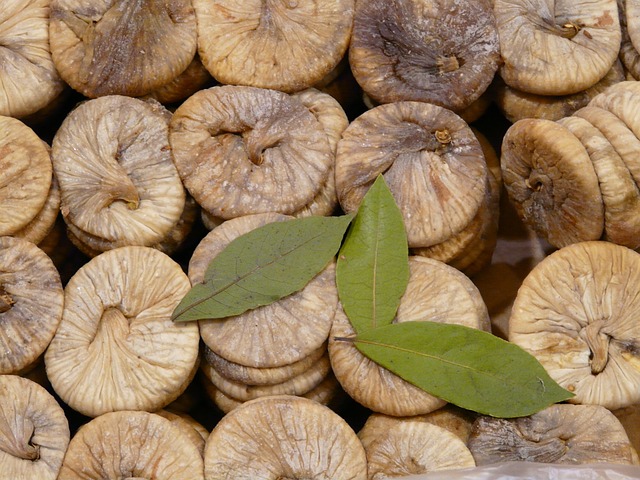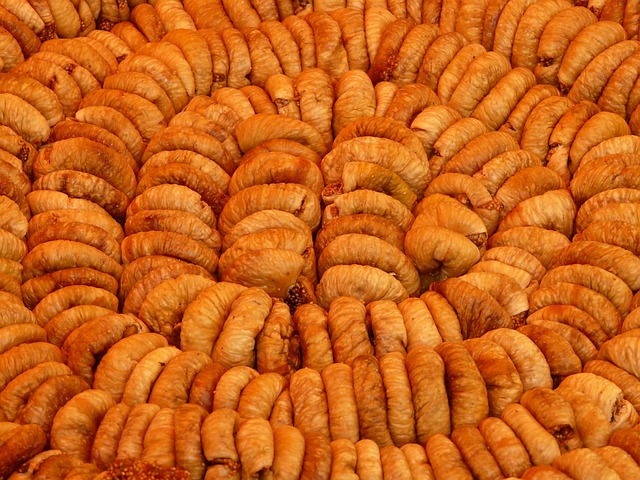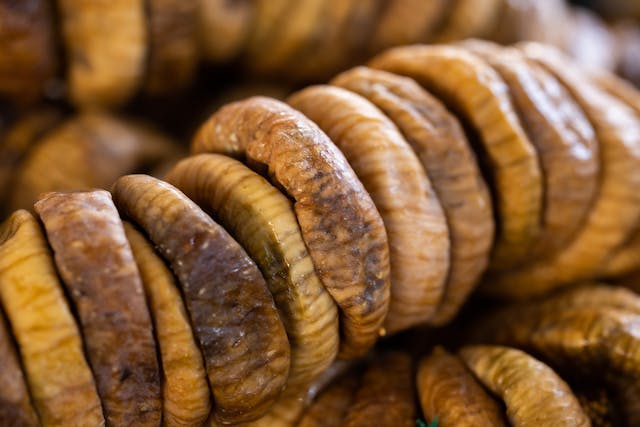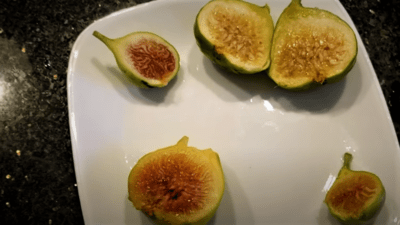Dried figs, also known as mission figs, have a rich history of consumption and offer a versatile fruit option for vegans during Christmas. These missionaries are not only delicious, but they can also help prevent excess fat intake. During the Christmas season, these fruits are created by removing the water content from fresh figs in a process that takes several days. The result is a concentrated and naturally sweet flavor that is perfect to have on hand for holiday festivities. Whether enjoyed on their own as a healthy snack or incorporated into various culinary preparations, dried figs provide a delightful burst of taste. With Christmas just around the corner, dried figs can be a perfect addition to your family’s holiday feast. Place your orders today to ensure you have them in time for the big day.
Not only do dried figs offer an enjoyable eating experience, but they also come with numerous health benefits for the whole family during Christmas. Packed with essential nutrients like fiber, potassium, and antioxidants, they make for a nutritious addition to your family’s Christmas diet. With their long shelf life and convenient portability, dried figs can be easily incorporated into your daily routine.
Discover the many ways you can enjoy dried figs while reaping their nutritional rewards.

Understanding Figs and Their Varieties
Figs, a member of the mulberry family, come in various varieties, each with its unique characteristics. The most common fig varieties include Black Mission, Calimyrna, Kadota, and Adriatic. These varieties differ in color, texture, sweetness, and size.
The Black Mission figs have a dark purple to black skin and a deep red flesh. They are known for their rich sweetness and jammy texture. Calimyrna figs have a pale yellowish-green skin and golden flesh. They are larger than other fig varieties and offer a nutty flavor profile.
Kadota figs have light green skin and amber-colored flesh. They are less sweet compared to other types but still possess a delightful honey-like flavor. Lastly, Adriatic figs feature light green or yellowish skin with pink or amber flesh. They are known for their delicate sweetness and tender texture.
The taste may vary depending on the type of fresh fig used for drying. For instance, dried Black Mission figs retain their intense sweetness while offering a chewy consistency. Dried Calimyrna figs maintain their nutty flavor but become softer in texture.
Dried Kadota figs preserve their honey-like taste but develop a slightly chewier texture when dried. Dried Adriatic figs maintain their delicate sweetness but become even more tender when dried.
Understanding the different varieties of figs is essential as it allows you to choose the right type of dried fig for your culinary needs. If you’re looking for intense sweetness and jammy texture in your dishes or desserts, opt for dried Black Mission or Adriatic figs.
On the other hand, if you prefer a nuttier flavor profile with a softer consistency, dried Calimyrna or Kadota figs would be ideal choices.
In addition to their distinct flavors and textures, figs are also packed with nutritional benefits. They are a good source of dietary fiber, which aids in digestion and promotes a healthy gut. Figs are also rich in essential minerals like potassium and magnesium, which support heart health and help regulate blood pressure.
Moreover, figs contain antioxidants that protect the body against oxidative stress and inflammation. These antioxidants contribute to overall well-being and may even have anti-cancer properties.
Nutritional Profile of Dried Figs
Dried figs are not only delicious but also packed with essential nutrients that can benefit your overall health. Let’s take a closer look at the nutritional profile of dried figs:
Fiber, Vitamins, and Minerals Galore
Dried figs are a great source of dietary fiber, which is crucial for maintaining a healthy digestive system. The high fiber content in dried figs helps promote regular bowel movements and prevents constipation. It also aids in controlling blood sugar levels, making it an excellent choice for those with diabetes or anyone looking to maintain stable energy levels throughout the day.
In addition to fiber, dried figs contain a variety of vitamins and minerals that contribute to overall well-being. They are particularly rich in vitamin A, which supports eye health and boosts immune function. Vitamin K is another nutrient found in dried figs that plays a vital role in blood clotting and bone health.
Dried figs shine brightly. They are an excellent source of calcium, which is essential for strong bones and teeth. Potassium, another mineral abundant in dried figs, helps regulate blood pressure and supports heart health.
Antioxidant Powerhouse
Dried figs also boast an impressive array of antioxidants. These powerful compounds help protect your cells from damage caused by harmful free radicals. By neutralizing these free radicals, antioxidants contribute to reducing the risk of chronic diseases such as heart disease, cancer, and age-related macular degeneration.
A Nutrient-Rich Addition to Your Diet
Including dried figs in your diet can provide you with a range of beneficial nutrients that support various aspects of your health. Whether you enjoy them as a standalone snack or incorporate them into recipes like salads or baked goods, their nutritional value remains intact.
To make the most out of their nutritional benefits, opt for organic varieties without added sugars or preservatives whenever possible. Dried figs can be enjoyed on their own or paired with other fruits, nuts, or yogurt for a wholesome and satisfying snack.

Health Benefits of Eating Dried Figs
Aids Digestion with Natural Laxative Properties
Regularly consuming dried figs can be beneficial for your digestive system. These sweet treats contain natural laxative properties that can help promote regular bowel movements. The high fiber content in dried figs adds bulk to the stool, making it easier to pass through the intestines. So, if you find yourself struggling with constipation or irregular bowel movements, adding dried figs to your diet may provide some relief.
Lowers Cholesterol and Reduces Heart Disease Risk
The soluble fiber found in dried figs offers numerous health benefits, including the ability to lower cholesterol levels and reduce the risk of heart disease. This type of fiber helps prevent the absorption of cholesterol in the bloodstream, promoting its excretion from the body. By reducing cholesterol levels, dried figs contribute to maintaining a healthy cardiovascular system and decreasing the risk of heart-related ailments.
Protects Against Cell Damage with Antioxidants
Dried figs are packed with antioxidants that play a crucial role in protecting our cells from damage caused by harmful free radicals. Free radicals are unstable molecules that can cause oxidative stress and lead to various diseases like cancer, diabetes, and heart disease. The antioxidants present in dried figs neutralize these free radicals, preventing cell damage and supporting overall well-being.
Supports Healthy Blood Pressure Levels with Potassium Content
Potassium is an essential mineral that plays a vital role in maintaining healthy blood pressure levels. Dried figs are an excellent source of potassium, making them a great addition to a balanced diet aimed at managing blood pressure. Adequate potassium intake helps relax blood vessels and reduces strain on the cardiovascular system, ultimately promoting optimal blood pressure.
Incorporating dried figs into your diet not only satisfies your taste buds but also provides several health benefits. Whether you’re looking for digestive support, cholesterol management, antioxidant protection, or blood pressure regulation, dried figs have got you covered. So, why not enjoy a handful of these delicious and nutritious fruits as a snack or add them to your favorite recipes for an extra dose of healthiness?
Dried Figs vs. Fresh Figs: Nutritional Differences
Concentrated Nutrients in Dried Figs
Dried figs and fresh figs may look similar, but there are some key nutritional differences between the two. While fresh figs have a higher water content, dried figs offer a more concentrated source of nutrients. The drying process removes much of the water from the fruit, resulting in a smaller and denser snack.
Fiber and Mineral Boost in Dried Figs
One of the benefits of drying figs is that it increases their fiber and mineral content. Fiber is important for digestive health and can help regulate blood sugar levels. By removing most of the water, dried figs become an excellent source of dietary fiber, providing a satisfying snack option.
Drying figs enhances their mineral content. These sweet treats are packed with essential minerals like potassium, magnesium, calcium, and iron. Potassium helps maintain proper heart function and supports healthy blood pressure levels. Magnesium is crucial for bone health and plays a role in over 300 biochemical reactions in the body.
Vitamin C Content Comparison
While dried figs offer numerous nutritional benefits, fresh figs have an advantage. Vitamin C is known for its immune-boosting properties and its role in collagen production. However, during the drying process, some of this vitamin is lost.
Fresh figs contain more vitamin C compared to their dried counterparts since they undergo minimal processing or preservation methods that could lead to nutrient loss. So if you’re looking to increase your intake of this essential vitamin, opting for fresh figs would be a better choice.

Incorporating Both Fresh and Dried Figs
Both fresh and dried figs have unique nutritional profiles that make them valuable additions to your diet. While dried figs provide concentrated amounts of fiber and minerals due to the dehydration process, fresh figs offer higher vitamin C content.
Incorporating both types of figs into your diet can provide a range of benefits. Fresh figs can be enjoyed as a snack on their own, added to salads, or used in recipes for a burst of natural sweetness. Dried figs make a convenient and portable snack option, perfect for on-the-go or as an ingredient in baking and cooking.
By including fresh and dried figs in your diet, you can enjoy the benefits of their respective nutritional profiles.
Culinary Uses of Dried Figs
Dried figs are incredibly versatile and can be used in a variety of sweet and savory dishes, making them a must-have ingredient in any kitchen. Whether you’re looking to add natural sweetness to your baking or enhance the flavor profile of your meals, dried figs have got you covered.
Salads, Desserts, Sauces, and Stuffing
One of the fantastic things about dried figs is their ability to elevate both salads and desserts. You can chop them up and toss them into green salads for a burst of sweetness and chewy texture. Their unique flavor pairs well with various salad ingredients like mixed greens, goat cheese, nuts, and vinaigrettes.
Dried figs are a game-changer. They bring a delightful natural sweetness that complements cakes, cookies, pies, and bread perfectly. You can chop them up and mix them into cookie dough or cake batter for added flavor and texture. Or you can even stuff them with nuts or cheese for an indulgent treat.
Dried figs make excellent additions to sauces. Puree them with some herbs and spices to create a rich and flavorful sauce that pairs well with roasted meats or grilled vegetables. The combination of the sweet figs with savory elements creates a delectable balance that will leave your taste buds wanting more.
Breakfast Cereals or Yogurt Bowls
Chopped or pureed dried figs also make for a delicious addition to breakfast cereals or yogurt bowls. Sprinkle some chopped dried figs on top of your morning cereal for added sweetness and crunch. Alternatively, blend some dried figs into your yogurt for a creamy and naturally sweet twist.
The possibilities are endless. Not only do they provide essential nutrients like fiber but they also add depth of flavor that takes your morning meal to the next level.
Enjoying as a Healthy Snack
Last but certainly not least, dried figs can be enjoyed on their own as a healthy snack. They are portable, convenient, and packed with nutrients. Grab a handful of dried figs when you need a quick pick-me-up during the day or whenever you’re feeling peckish.
The natural sweetness and chewy texture of dried figs make them an excellent alternative to sugary snacks.

Selecting the Right Type of Dried Fig
Taste Preferences and Recipe Requirements
When choosing dried figs, it’s important to consider the variety that suits your taste preferences and recipe requirements. Different types of figs offer varying flavors and textures that can enhance the overall taste of your dish. For instance, Black Mission figs have a deep, sweet flavor, while Calimyrna figs are known for their nutty and buttery taste. By understanding your own palate and the specific needs of your recipe, you can select the perfect dried fig variety to elevate your culinary creations.
Plumpness and Moisture
To ensure you’re getting high-quality dried figs, pay attention to their appearance. Look for plump and moist dried figs that have retained their natural moisture. These will provide a more enjoyable eating experience as they tend to be softer and juicier. Avoid dry or shriveled figs, as they may lack flavor and have a tough texture. A quick tip is to gently squeeze the dried figs; if they yield slightly under pressure, it indicates that they are still moist.
No Signs of Mold or Discoloration
Inspect the dried figs carefully before making a purchase. Check for any signs of mold or discoloration on the surface. Mold growth can affect both the taste and safety of the fruit, so it’s crucial to avoid any packages with visible mold spots. Discoloration may indicate spoilage or improper storage conditions. Opt for dried figs with uniform color throughout for optimal quality.
Organic Options
For those who prefer pesticide-free alternatives or prioritize organic produce, organic dried fig options are available in many stores or online platforms. Organic farming practices eliminate synthetic pesticides and fertilizers from cultivation processes, promoting environmental sustainability while ensuring food safety.
Whole Dried Figs vs Pre-Chopped Ones
Consider purchasing whole dried figs instead of pre-chopped ones whenever possible. Whole dried figs tend to retain their freshness and flavor for a longer period. Pre-chopped figs, on the other hand, may dry out more quickly due to increased surface area exposure. By purchasing whole dried figs, you have more control over how you use them in your recipes and can enjoy the full flavor and texture of the fruit.
Proper Storage Techniques for Dried Figs
To ensure your dried figs stay fresh and maintain their delicious flavor, it’s important to store them correctly. Here are some tips to help you properly store your dried figs:
Store in an airtight container or resealable bag
The first step is to transfer them into an airtight container or a resealable bag. This will help keep moisture out and prevent the figs from becoming too dry or stale. Make sure the container is clean and dry before transferring the figs.
Keep your handbags in a cool, dry place away from direct sunlight to preserve the product for many days.
Dried figs are best stored in a cool, dry place away from direct sunlight. Exposure to heat and light can cause them to lose their flavor and nutritional value over time. Find a spot in your pantry or cupboard that is away from any sources of heat, such as stoves or ovens.
Maintain freshness for up to six months
If stored correctly, dried figs can last up to six months without losing their quality or nutritional value. By keeping them in an airtight container or resealable bag in a cool, dry place, you can enjoy their sweet taste for an extended period of time. Just make sure to check for any signs of spoilage before consuming.
Avoid strong-smelling foods nearby
Dried figs have the tendency to absorb odors easily due to their porous nature. To prevent this from happening, it’s essential to avoid storing them near strong-smelling foods like onions or garlic. These strong aromas can seep into the figs and alter their taste and aroma.
By following these proper storage techniques, you can ensure that your dried figs remain fresh and flavorful for longer periods of time. Remember to always check for any signs of spoilage before consuming your dried figs, such as mold or an off smell. When stored correctly, you can enjoy the natural sweetness and nutritional benefits of dried figs in various recipes or as a standalone snack.
Integrating Dried Figs into Your Diet
Dietary Fiber: A Nutritional Powerhouse
Dried figs are packed with dietary fiber, making them an excellent addition to your diet. Fiber is essential for maintaining a healthy digestive system and promoting regular bowel movements. By incorporating dried figs into your meals or snacks, you can increase your daily fiber intake and support overall gut health.
A Healthy Snack Alternative
When you’re craving a sweet treat but want to make a healthier choice, reach for dried figs. They offer a natural sweetness without the added sugars found in many processed snacks. Swap out sugary candies or cookies for a handful of dried figs to satisfy your cravings while nourishing your body with essential nutrients.
Abundant Nutrition in Every Bite
Despite their small size, dried figs are loaded with nutrition. They contain vitamins such as vitamin K and minerals like potassium, calcium, and iron. These nutrients play crucial roles in supporting bone health, regulating blood pressure, and preventing iron deficiency anemia. Adding dried figs to your diet can help ensure you’re getting these vital nutrients on a regular basis.
Antioxidants for Optimal Health
Dried figs are rich in antioxidants that combat harmful free radicals in the body. These antioxidants help protect cells from damage caused by oxidative stress and inflammation. Including dried figs in your diet can contribute to improved overall health and reduced risk of chronic diseases such as heart disease and certain types of cancer.

Delicious Ways to Enjoy Dried Figs
There are numerous ways to incorporate dried figs into your daily meals and snacks:
- Breakfast Boost: Add chopped dried figs to oatmeal or yogurt for a naturally sweet and nutritious start to your day.
- Salad Sensation: Sprinkle sliced or diced dried figs over fresh greens or mix them into grain-based salads for added flavor and texture.
- Trail Mix Magic: Create your own trail mix by combining dried figs with nuts, seeds, and other dried fruits for a satisfying and energy-boosting snack.
- Baked Delights: Use diced or pureed dried figs in baked goods such as muffins, bread, or cookies to enhance their taste and nutritional value.
By incorporating dried figs into your diet through these creative ways, you can enjoy their delicious flavor while reaping the health benefits they offer.
Purchasing and Storing High-Quality Dried Figs in Canada
There are a few key factors to consider. Let’s take a closer look at these aspects to ensure you get the best dried figs for your needs.
Quality Assurance: Look for Certifications
When shopping for dried figs, it’s essential to prioritize quality assurance. Look for certifications such as organic or non-GMO labels on the packaging. These certifications guarantee that the figs have been produced without the use of harmful chemicals or genetic modification. By choosing certified products, you can be confident that you are getting high-quality dried figs.
Check for Moisture Content
One crucial aspect of selecting good-quality dried figs is checking their moisture content. You want to avoid figs that are too dry or overly moist. Dry figs may be tough and lack flavor, while excessively moist ones might indicate improper storage conditions or potential spoilage. Opt for dried figs with a slightly soft texture but not overly sticky or squishy.
Appearance Matters: Color and Texture
The appearance of dried figs can provide valuable insights into their quality. Look for figs with a rich color, ranging from deep brown to dark purple. Avoid those that appear pale or discolored as they may not have been properly processed or stored. Examine the texture of the figs; they should be plump and slightly chewy without any signs of mold or excessive hardening.
Packaging and Storage Tips
To maintain the freshness and flavor of your dried figs, proper packaging and storage are essential. Choose packages that are tightly sealed to prevent exposure to air and moisture. Once opened, transfer them into an airtight container or resealable bag to keep them fresh for longer periods.
Store your dried figs in a cool, dry place away from direct sunlight. Excessive heat or light can cause them to lose their flavor and become stale. A pantry or cupboard is an ideal spot for storing dried figs, as long as it is not near a heat source like the stove or oven.
Shelf Life Considerations
Dried figs have a relatively long shelf life if stored properly. However, it’s still important to check the expiration date on the packaging before purchasing. This ensures that you are buying dried figs with maximum freshness and flavor.
Conclusion
In conclusion, dried figs are a versatile and nutritious addition to any diet. They offer a range of health benefits, from improving digestion to boosting heart health. Their high fiber content and abundance of essential vitamins and minerals make them a valuable snack or ingredient. Whether you enjoy them on their own, in baked goods, or as a topping for salads and cereals, dried figs are sure to enhance both the taste and nutritional value of your meals.
To incorporate dried figs into your diet, consider adding them to your next grocery list and experimenting with different recipes. From sweet treats like fig bars and energy balls to savory dishes like stuffed chicken breasts or salads, the possibilities are endless. Remember to choose high-quality dried figs and store them properly to maintain their freshness and flavor. By making dried figs a regular part of your diet, you can reap the many benefits they have to offer.
FAQs
What are dried figs?
Dried figs are the dehydrated version of fresh figs. They are made by removing the moisture from ripe figs, resulting in a chewy and sweet fruit with a longer shelf life.
How do you store dried figs?
To store dried figs, keep them in an airtight container or resealable bag in a cool and dry place. It is best to store them in the refrigerator to maintain their freshness and prevent spoilage.
Are dried figs healthy?
Yes, dried figs are a nutritious snack. They are rich in fiber, vitamins, and minerals such as potassium and calcium. However, they also contain natural sugars, so it’s important to consume them in moderation as part of a balanced diet.
How can I use dried figs in recipes?
Dried figs can be used in various recipes. They make a delicious addition to baked goods like cakes and cookies. You can also chop them up and add them to salads, oatmeal, or trail mix for an extra burst of flavor and texture.
Can I eat the skin of dried figs?
Yes, you can eat the skin of dried figs. The skin is edible and adds to the overall taste experience. However, if you prefer a softer texture or have difficulty digesting the skin, you can remove it before consuming.
